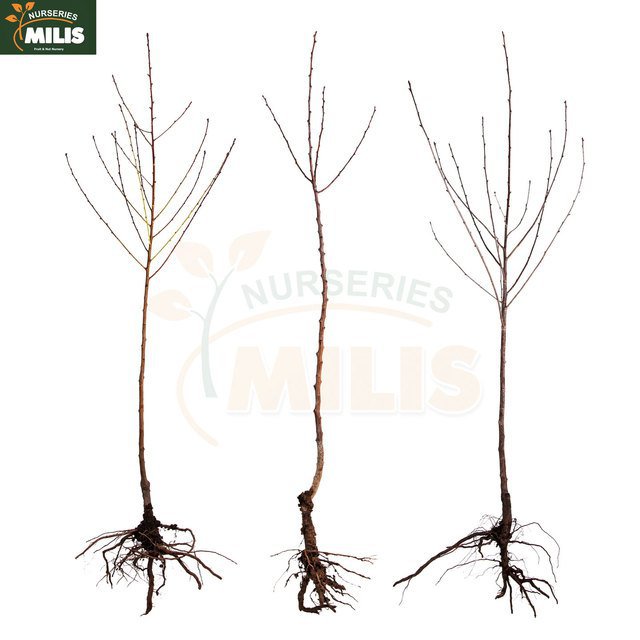Plant types
Bare-root
Traditionally, it is the most common way of production. The plants are shipped without leaves and most important, soil and with a bare root system. This way we secure that there will not be any sort of contamination during production or shipping.
Shipping takes place during winter, when the plants are dormant.
The height of the trees varies from 100 to 140 cm and they are 1 or 2 years old depending on the species and the variety.
This way we make sure we produce uniform quality plants.

Two-year old trees
In this type, the tree is benchgrafted during winter and is planted in spring. It is pruned during the winter of the second year and it is lifted in the autumn. Its main characteristic is the potential yield of 6 to 9 kg per tree during the second year. Full yield is expected during the fourth or fifth year, depending on the orchard technology.
Maiden trees
The trees are budded in the field during summer and they are lifted in the autumn of the next year. Potential yield is expected to 5-7 kg per tree during the second year, depending on the orchard technology.
Nine-month trees
The trees are benchgrafted in the winter, planted in spring and are lifted in the autumn. Potential yield of 3-4 kg per tree is expected during the second year and full yield is expected during the fifth year, depending on the orchard technology.
Dormant buds
This type of rootstock is planted in the winter, on which 1 or 2 buds of a variety are budded in August/September. The budded tree is sold in the winter of the next year.
The main advantage of this tree is quicker production (varieties budded in the summer can meet the market in winter). In addition, this type of tree is cheaper because of the shorter nursery cycle.
The disadvantage is the longer effort needed to train the trees in the orchard after planting.
This type of trees is a standard choice for peach and nectarine trees, less common for apricot trees and very rare for cherry trees, due to the fragility of the cherry buds.
Planting can be characterized successful as soon as the trees get in third-leaf stage.



